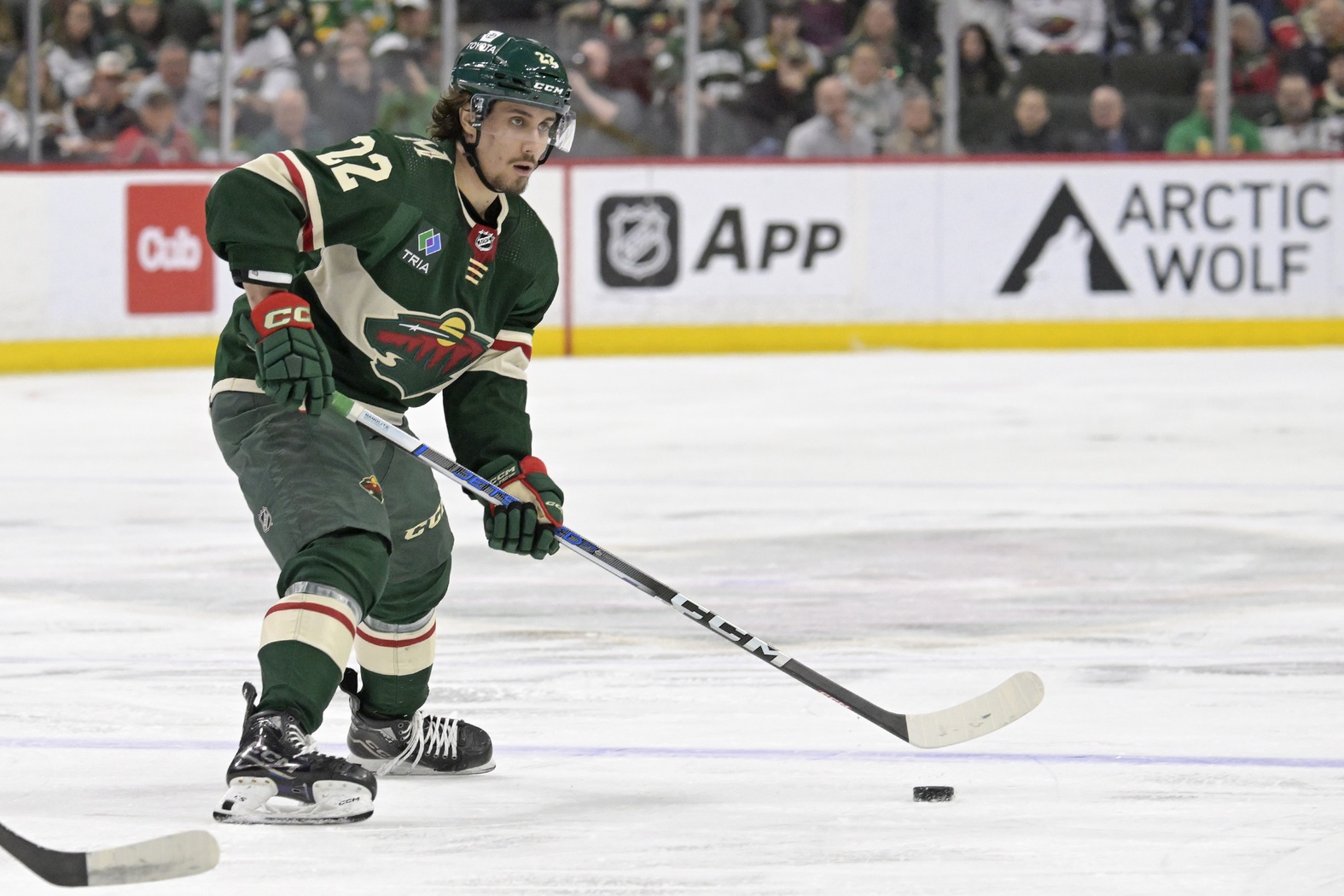
The Minnesota Wild’s identity becomes more apparent as the team begins its playoff push. With the season's trade deadline in the rearview mirror, the team prepares themselves for the toughest and most crucial time of the season. The Wild have called up a few prospects to the NHL in the last month.
Mason Shaw is returning from his fourth ACL tear, and they’ve signed Marat Khusnutdinov and called up Adam Beckman. All three have the potential to make an impact immediately. This is the best time for a team that was sellers at the trade deadline to get some new faces, some experience, and opportunities to gel with the already established players. It's a low-risk, high-reward situation for Minnesota.
If the Wild continue on this winning trajectory (12-4-3 record since the All-Star Break), they will be in the playoffs this season, especially with the boost that Shaw, Beckman, and Khusnutdinov can bring to the organization every night.
Minnesota added a handful of younger players on expiring contracts at the trade deadline. The moves were highly anticipated, with no surprise departures. Future draft picks in upcoming drafts compensated for many of these moves. Looking at Bill Guerin's trades cumulatively, we can begin to decipher his vision for the Wild.
The Wild staff has continued on a path that starts formulating a more identifiable future strategy. Bringing Khusnutdinov in is part of it. So is bringing Vladislav Firstov from overseas into Iowa. Even a move as small as trading Connor Dewar to the Toronto Maple Leafs for Dmitry Ovchinnikov hints at this.
Minnesota’s identity has started to form into a hybrid style of hockey. The team's future is headed towards two lines with different focuses. One will focus on a North American style of play centered on speed, physicality, and toughness. The second will be a Russian style of play, focused more on speed and puck control.
The Russian style of play is really the most potent, with small, faster, highly skilled players who tend to be shorter and smaller in stature. Their size and pure speed will frustrate opponents trying to contain such elusive world-class athletes. These players will wear the opposition down quickly, especially the ones who don’t skate all four lines evenly.
When you start setting up your team for the playoffs, you must take into account that you can possibly play each team seven times within 14 days, with thousands of miles of travel in between. Therefore, building a team that plays multiple styles means being able to set the tempo and not allowing the opposition to dictate anything.
As you look at Minnesota’s current roster, the team seems to have close to four solid, productive lines. When building a roster, you will have a successful team year every year if you can get three of the four lines to be positive in plus/minus and one dominant line with +20-+25.
The Wild have always emphasized a defensive style of play, and transitioning to a new style isn’t easy. Evolving your identity involves acquiring players with the history and/or skills needed to execute successfully in the NHL.
Let’s separate the team into three categories to highlight this hybrid style.
The first is the Russian style, with Kirill Kaprizov joining Khusnutdinov and top prospect Danila Yurov. The Wild emphasizes the offensive players constantly circling, always m, making presumably unpredictable playstyle. They have designed it for faster and smaller players who can be elusive and explosive.
The second is the North American style, which involves bigger guys like Matt Boldy, Ryan Hartman, and Joel Eriksson Ek. Minnesota’s North American-style players who play at a high level in this system are 6-foot-0 to 6-foot-2. The Wild have packed their roster with promising, explosive, and talented young men with the skills to become a winning team.
The third is a group of reliable, dependable, rather healthy, defensively sound d-men who do an excellent job keeping the opposition's scoring opportunities to a minimum. Brock Faber is a potent defenseman who has become a potent quarterback on the power play as a rookie.
Winning is the ultimate goal every day, and entering the playoffs is important — except to the diehard Wild fans who don’t want that this year. We have lived that life for too many years, knowing deep down inside that we don’t have what it takes.
A second line focusing on speed, skill, and toughness that the Wild can juggle depending on the opponent that night complements Kaprizov and the insanely talented group of Russians already in the system who are ready or not far off. They should have a third and fourth line that can score while containing the opposition’s top line.
The Wild will put the veterans in a position they haven’t had: being out there to impose their style of play on the game instead of just trying to keep the score close. The young Russians will be something we haven’t seen in Minnesota, a group that will set the pace each night.
That will cause many older teams to realize they are dealing with a team that can dictate the game in many different facets while complimented by defensemen who keep the opportunities to a minimum while in the defensive zone. The future looks bright in the State of Hockey.
Think you could write a story like this? Hockey Wilderness wants you to develop your voice, find an audience, and we'll pay you to do it. Just fill out this form.
-
 2
2
-
 1
1



.thumb.jpg.80e10d73a1a36997641eb63107ea3d25.jpg)



Recommended Comments
Join the conversation
You can post now and register later. If you have an account, sign in now to post with your account.
Note: Your post will require moderator approval before it will be visible.